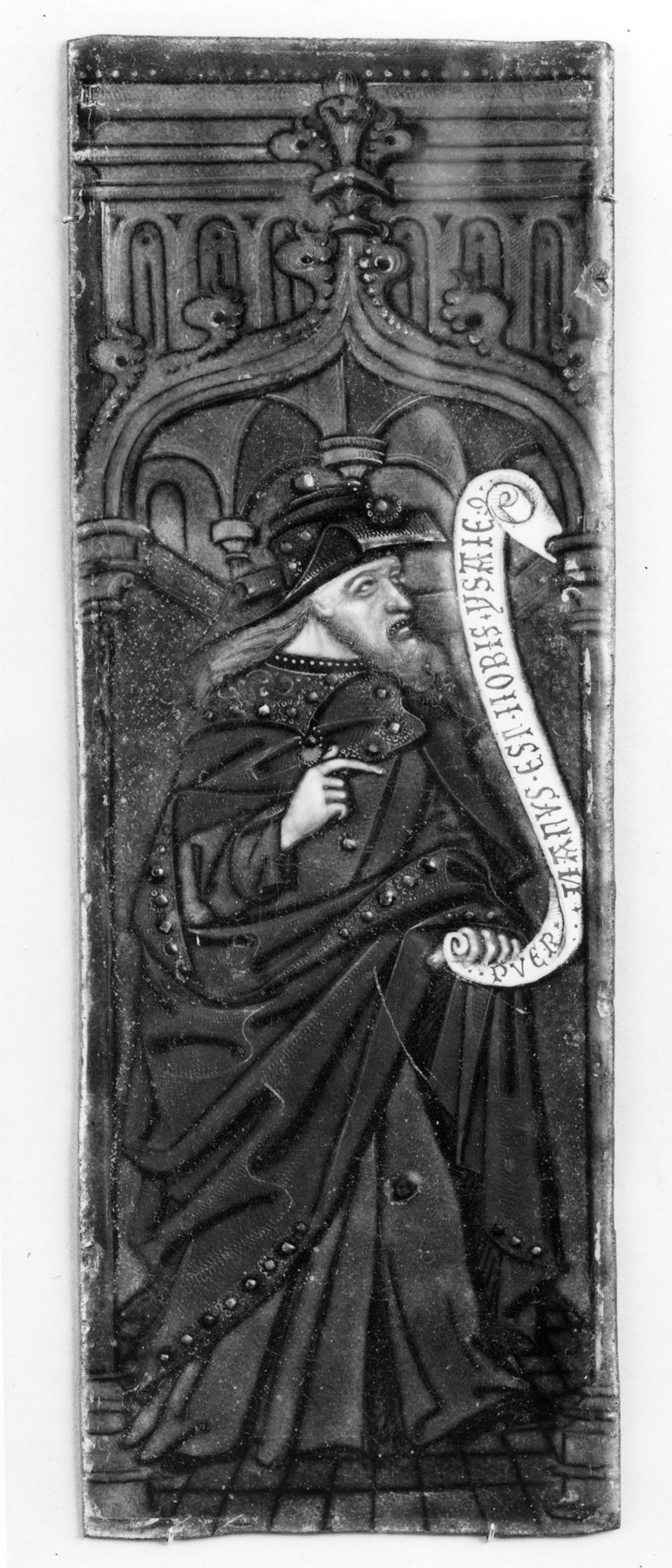Two Wings: Prophets
(Renaissance Europe )
The two prophets, originally forming the wings belonging to a Nativity triptych, have the same garb and gesture as David and Isaias on the wings of the triptych Walters 44.316, and are set within similar niches. The model used there for David was employed here for Isaias, whose scroll is inscribed: PVER NATVS EST NOBIS YSAIE 9 (Isaias 9:6). The other prophet was patterned after the Isaias of Walters 44.316. His scroll is inscribed: PEPERIT FILIVM SVVM PRIMO GENITVM (Luke 2:7).
The wings were formerly associated with the plaque of the Man of Sorrows, Walters 44.438. They are slightly higher than that plaque in its original state and are made of thicker copper. They come from a triptych of the Nativity. Three plaques of the Nativity by the Master of the Orléans Triptych are known: Marquet de Vasselot, "Emaux limousins," p. 254-255, nos. 69, 71, 72. The Walters plaques would fit perfectly the Nativity plaque in the British Museum, which is of the same height and has the same counter-enamel: Marquet de Vasselot, op. cit., no. 72; British Museum, "Guide to Mediaeval Antiquities," 1924, fig. 54. Related triptychs by Nardon Pénicaud prove that it was usual to bracket a Nativity scene or other representation presented in an open space between figures within niches.
These plaques are certainly the work of an assistant and not a creation by the master himself, a fact which is clearly demonstrated by the inability of our enameller to measure up to the technically difficult handling of the flesh tones with which the head of the workshop experimented in his masterpieces. The design is also much less firmly established and the profiles of the heads are curiously flattened, as is that of John the Baptist on a wing likely by the same hand as these two prophets, formerly in the Edouard Aynard Collection (sale, Paris, December 1-4, 1913, lot 171).
Provenance
Provenance (from the French provenir, 'to come from/forth') is the chronology of the ownership, custody, or location of a historical object. Learn more about provenance at the Walters.
Frédéric Spitzer, Paris, by purchase; Frédéric Spitzer Sale, Paul Chevallier and Charles Mannheim, April 17, 1893, lot 418; Oscar Hainauer, Berlin, by purchase; Raoul Heilbronner, Paris, by purchase; Henry Walters, Baltimore, 1913, by purchase, Walters Art Museum, 1931, by bequest.
Geographies
France, Limoges (Place of Origin)
Measurements
Each H: 8 9/16 x W: 3 1/16 in. (21.7 x 7.8 cm)
Credit Line
Acquired by Henry Walters, 1913
Location in Museum
Not on view
Accession Number
In libraries, galleries, museums, and archives, an accession number is a unique identifier assigned to each object in the collection.
In libraries, galleries, museums, and archives, an accession number is a unique identifier assigned to each object in the collection.
44.645





